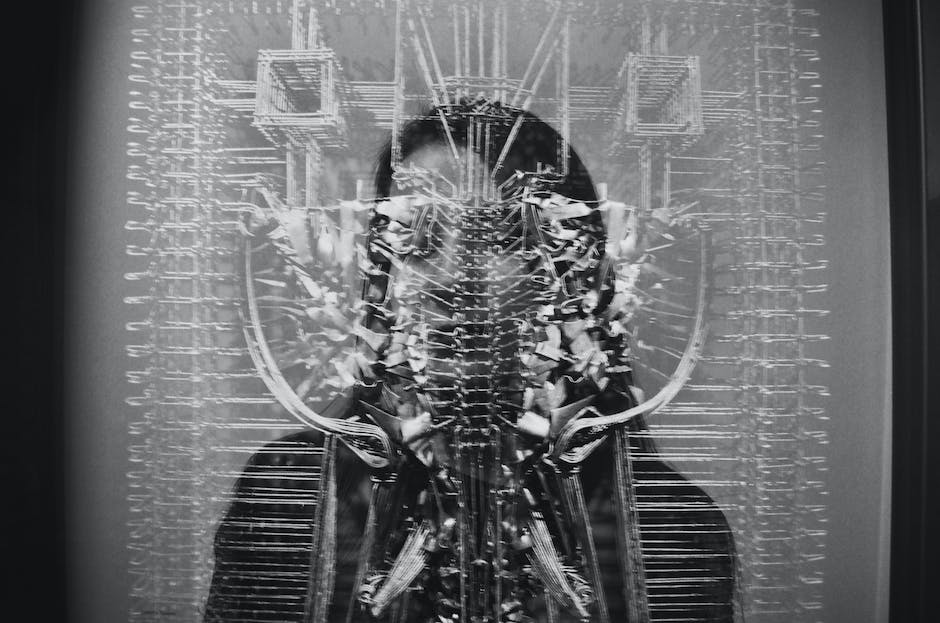-
Table of Contents
Introduction to Vector Drawing in Clip Studio Paint

Welcome to our blog post on how to create vector drawings in Clip Studio Paint! If you’re new to this software or just starting out with vector drawing, you’ve come to the right place. In this article, we’ll introduce you to the basics of vector drawing in Clip Studio Paint and provide you with some tips and tricks to get started.
First, let’s talk about what vector drawing is and why it’s useful. Unlike raster or pixel-based images, which are made up of individual dots or pixels, vector graphics are created using mathematical equations. This means that they can be scaled up or down without losing any quality, making them ideal for creating illustrations, logos, and other graphics that need to be resized frequently.
Clip Studio Paint offers a range of powerful tools and features for creating vector drawings. To access these tools, simply open a new canvas in Clip Studio Paint and select the “Vector Layer” option. This will create a new layer specifically for vector drawing.
Once you have your vector layer set up, you can start drawing using the various vector tools available. These include the Pen tool, which allows you to create smooth and precise lines, and the Shape tool, which lets you quickly create basic shapes like rectangles, circles, and polygons.
One of the key advantages of vector drawing in Clip Studio Paint is the ability to easily edit and manipulate your artwork. Unlike traditional drawing methods, where mistakes can be difficult to correct, vector drawings can be easily modified and adjusted. You can move, resize, and rotate individual elements of your drawing, as well as change their color, stroke width, and other properties.
Another useful feature of Clip Studio Paint is the ability to create and edit vector text. This means that you can add text to your vector drawings and customize it to suit your needs. You can choose from a range of fonts, adjust the size and spacing of your text, and even apply special effects like gradients and shadows.
To make your vector drawings even more dynamic and expressive, you can also apply various effects and filters. Clip Studio Paint offers a wide range of options, including blurring, sharpening, and distorting effects, as well as filters for adding textures, patterns, and other artistic elements to your artwork.
Once you’re happy with your vector drawing, you can export it in a variety of formats, including JPEG, PNG, and SVG. This allows you to use your artwork in other software or share it online without any loss of quality.
In conclusion, Clip Studio Paint is a powerful tool for creating vector drawings. Whether you’re a beginner or an experienced artist, this software offers a range of tools and features to help you bring your ideas to life. By following the tips and tricks outlined in this article, you’ll be well on your way to creating stunning vector artwork in no time. So go ahead, give it a try, and let your creativity soar!
Step-by-Step Guide for Creating Vector Drawings in Clip Studio Paint
Clip Studio Paint is a powerful software that allows artists to create stunning vector drawings. Whether you are a beginner or an experienced artist, this step-by-step guide will help you navigate through the process of creating vector drawings in Clip Studio Paint.
To start, open Clip Studio Paint and create a new canvas. Choose the size and resolution that suits your project. Once you have your canvas ready, it’s time to dive into the world of vector drawing.
The first step is to select the Pen tool from the toolbar. This tool is essential for creating precise and smooth lines in vector drawings. With the Pen tool selected, you can adjust the brush size and hardness to your liking. Experiment with different settings to find the perfect brush for your drawing.
Now, it’s time to start drawing. Click on the canvas to create anchor points, and then click and drag to create curves. The Pen tool in Clip Studio Paint allows you to create both straight lines and curves effortlessly. Take your time to create the desired shape, and don’t be afraid to make adjustments along the way.
To create more complex shapes, you can use the Add Anchor Point tool. This tool allows you to add anchor points to an existing line, enabling you to create intricate details and refine your drawing further. Simply click on the line where you want to add an anchor point, and then adjust it to your liking.
Once you have finished drawing a shape, you can fill it with color. Select the Fill tool from the toolbar and choose the desired color from the color palette. Click inside the shape, and it will be filled with the selected color. You can also adjust the opacity and blending mode of the fill to achieve different effects.
To add depth and dimension to your vector drawing, you can use the Gradient tool. This tool allows you to create smooth transitions between colors, giving your drawing a more realistic and three-dimensional look. Experiment with different gradients and blending modes to find the perfect combination for your artwork.
If you make a mistake or want to make changes to your drawing, don’t worry. Clip Studio Paint has a handy feature called the Edit Vector Layer tool. This tool allows you to modify your vector drawing by moving anchor points, adjusting curves, or changing the shape of your lines. Simply select the Edit Vector Layer tool and make the necessary adjustments.
Once you are satisfied with your vector drawing, it’s time to save your work. Clip Studio Paint allows you to save your artwork in various file formats, including JPEG, PNG, and PSD. Choose the format that suits your needs and save your drawing to your desired location.
Creating vector drawings in Clip Studio Paint may seem daunting at first, but with practice and patience, you will be able to create stunning artwork. Remember to experiment with different tools and settings to find your unique style. Don’t be afraid to make mistakes, as they can often lead to unexpected and exciting results. So, grab your digital pen and let your creativity flow in Clip Studio Paint!
Tips and Tricks for Mastering Vector Drawing in Clip Studio Paint
Clip Studio Paint is a powerful software that offers a wide range of tools and features for digital artists. One of its standout features is the ability to create vector drawings. Vector drawings are a popular choice among artists because they allow for greater flexibility and scalability. In this article, we will explore some tips and tricks for mastering vector drawing in Clip Studio Paint.
First and foremost, it is important to understand the basics of vector drawing. Unlike raster images, which are made up of pixels, vector drawings are created using mathematical equations. This means that they can be scaled up or down without losing any quality. To start creating vector drawings in Clip Studio Paint, simply select the vector layer option from the layer menu.
Once you have your vector layer set up, it’s time to start drawing. Clip Studio Paint offers a variety of tools for vector drawing, including the pen, brush, and shape tools. The pen tool is particularly useful for creating smooth and precise lines. To use the pen tool, simply click on the canvas to create anchor points, and then drag to create curves. You can adjust the shape of your lines by manipulating the anchor points.
Another useful tool for vector drawing is the brush tool. The brush tool allows you to create more organic and textured lines. You can adjust the size, opacity, and hardness of the brush to achieve the desired effect. Experiment with different brush settings to find the style that suits your artwork.
In addition to the pen and brush tools, Clip Studio Paint also offers a variety of shape tools. These tools allow you to quickly create geometric shapes such as rectangles, circles, and polygons. To use the shape tools, simply select the desired shape from the tool palette and drag on the canvas to create the shape. You can customize the size, color, and stroke of the shape using the options bar.
One of the advantages of working with vector drawings is the ability to easily edit and manipulate your artwork. Clip Studio Paint offers a range of editing tools for vector drawings, including the selection, transform, and path editing tools. The selection tool allows you to select and move individual anchor points or entire paths. The transform tool allows you to scale, rotate, and skew your artwork. The path editing tool allows you to adjust the shape of your lines by manipulating the anchor points.
When working with vector drawings, it is important to pay attention to the details. Clean and precise lines are essential for creating professional-looking artwork. To achieve clean lines, make use of the snap and stabilization features in Clip Studio Paint. The snap feature helps you create straight lines by automatically aligning your strokes to the nearest horizontal or vertical axis. The stabilization feature helps you create smooth lines by reducing the impact of hand tremors.
In conclusion, mastering vector drawing in Clip Studio Paint requires practice and experimentation. By familiarizing yourself with the various tools and features, you can create stunning vector artwork with ease. Remember to pay attention to the details and make use of the editing tools to refine your artwork. With time and dedication, you will become a master of vector drawing in Clip Studio Paint.
Advanced Techniques for Vector Drawing in Clip Studio Paint
Clip Studio Paint is a powerful software that offers a wide range of tools and features for artists and designers. One of its standout features is its vector drawing capabilities, which allow users to create crisp and scalable artwork. In this article, we will explore some advanced techniques for vector drawing in Clip Studio Paint, helping you take your digital art to the next level.
To begin, it’s important to understand the basics of vector drawing. Unlike raster graphics, which are made up of pixels, vector graphics are created using mathematical equations. This means that vector artwork can be scaled up or down without losing any quality. It also allows for precise control over lines, shapes, and colors.
When working with vectors in Clip Studio Paint, you have a variety of tools at your disposal. The Pen tool is a great starting point, as it allows you to create smooth and precise lines. By adjusting the pressure sensitivity settings, you can achieve different line weights and textures. The Bezier curve handles also give you the ability to create curves and angles with ease.
Another useful tool for vector drawing is the Shape tool. This tool allows you to quickly create basic shapes such as rectangles, circles, and polygons. By combining these shapes and manipulating their anchor points, you can create more complex forms. The Shape tool also offers options for adding gradients, patterns, and textures to your shapes, giving them depth and dimension.
In addition to the Pen and Shape tools, Clip Studio Paint provides a range of vector brushes that can be used to add texture and detail to your artwork. These brushes mimic traditional media such as ink, watercolor, and oil paint, allowing you to achieve a variety of effects. Experimenting with different brushes and settings can help you find a style that suits your artistic vision.
When working with vectors, it’s important to keep your artwork organized. Clip Studio Paint offers layers and groups, which allow you to separate different elements of your composition. This makes it easier to edit and manipulate individual parts without affecting the rest of your artwork. You can also use clipping masks to apply effects or textures to specific areas, giving your artwork a polished and professional look.
To further enhance your vector artwork, you can take advantage of Clip Studio Paint’s vector eraser and correction tools. The eraser tool allows you to remove unwanted lines or shapes, while the correction tools help you refine and smooth out your artwork. These tools can be especially useful when working on intricate details or fine linework.
Finally, don’t be afraid to experiment and push the boundaries of what you can achieve with vector drawing in Clip Studio Paint. The software offers a wide range of customization options, allowing you to tailor the program to your specific needs. By exploring different techniques and styles, you can develop your own unique artistic voice and create stunning vector artwork.
In conclusion, Clip Studio Paint is a powerful tool for vector drawing, offering a range of tools and features that can help you create crisp and scalable artwork. By mastering the Pen and Shape tools, experimenting with brushes and settings, and organizing your artwork effectively, you can take your digital art to new heights. So go ahead, unleash your creativity, and start creating amazing vector artwork in Clip Studio Paint.
Q&A
1. How do I create a new vector layer in Clip Studio Paint?
To create a new vector layer in Clip Studio Paint, go to the Layer menu, select New Layer, and choose Vector Layer.
2. How can I draw vector lines in Clip Studio Paint?
To draw vector lines, select the Pen tool from the toolbar, choose a brush type, adjust the settings as desired, and start drawing on the vector layer.
3. Can I edit vector drawings in Clip Studio Paint?
Yes, you can edit vector drawings in Clip Studio Paint. Select the Edit Vector Layer tool from the toolbar, then click on the vector line or shape you want to edit. You can adjust its shape, size, position, and other properties.
4. How can I export my vector drawing from Clip Studio Paint?
To export your vector drawing, go to the File menu, select Export, and choose a file format such as SVG or PDF. Adjust the export settings if needed, and save the file to your desired location.In conclusion, creating vector drawings in Clip Studio Paint involves using the vector layer and various tools such as the pen, brush, and shape tools. By utilizing these tools effectively, artists can create precise and scalable vector artwork with ease. Additionally, the software offers features like layer management, adjustment options, and exporting options, allowing artists to further enhance and share their vector drawings.














